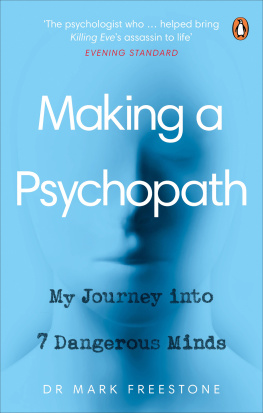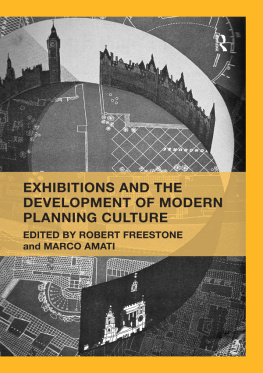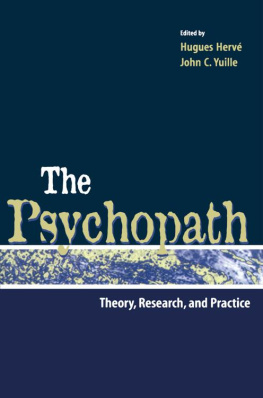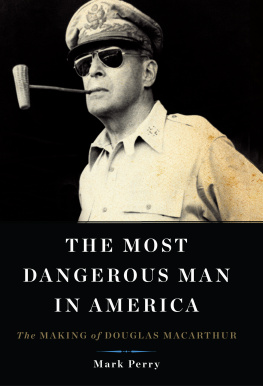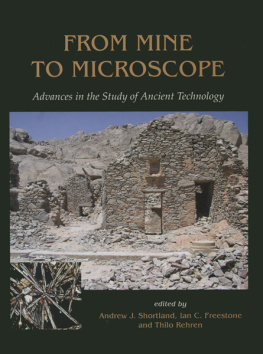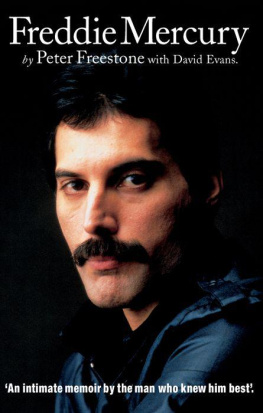Mark Freestone - Making a Psychopath: My Journey Into 7 Dangerous Minds
Here you can read online Mark Freestone - Making a Psychopath: My Journey Into 7 Dangerous Minds full text of the book (entire story) in english for free. Download pdf and epub, get meaning, cover and reviews about this ebook. year: 2020, publisher: Ebury Publishing, genre: Religion. Description of the work, (preface) as well as reviews are available. Best literature library LitArk.com created for fans of good reading and offers a wide selection of genres:
Romance novel
Science fiction
Adventure
Detective
Science
History
Home and family
Prose
Art
Politics
Computer
Non-fiction
Religion
Business
Children
Humor
Choose a favorite category and find really read worthwhile books. Enjoy immersion in the world of imagination, feel the emotions of the characters or learn something new for yourself, make an fascinating discovery.
- Book:Making a Psychopath: My Journey Into 7 Dangerous Minds
- Author:
- Publisher:Ebury Publishing
- Genre:
- Year:2020
- Rating:3 / 5
- Favourites:Add to favourites
- Your mark:
- 60
- 1
- 2
- 3
- 4
- 5
Making a Psychopath: My Journey Into 7 Dangerous Minds: summary, description and annotation
We offer to read an annotation, description, summary or preface (depends on what the author of the book "Making a Psychopath: My Journey Into 7 Dangerous Minds" wrote himself). If you haven't found the necessary information about the book — write in the comments, we will try to find it.
Making a Psychopath: My Journey Into 7 Dangerous Minds — read online for free the complete book (whole text) full work
Below is the text of the book, divided by pages. System saving the place of the last page read, allows you to conveniently read the book "Making a Psychopath: My Journey Into 7 Dangerous Minds" online for free, without having to search again every time where you left off. Put a bookmark, and you can go to the page where you finished reading at any time.
Font size:
Interval:
Bookmark:



Mark Freestone is a Senior Lecturer in the Centre for Psychiatry, Queen Mary University of London. He originally trained as a sociologist and has worked in prisons and forensic mental health services for over 15 years as a researcher and clinician, including in Category A prisons that house some of the UKs most notorious and high-risk criminals. He has also worked at high-security special hospitals as part of the Dangerous and Severe Personality Disorder (DSPD) Programme, which piloted new interventions for men and women in the UK with a diagnosis of psychopathy or a severe personality disorder. He was a consultant to series 1 and 2 of BBC Americas Killing Eve and is an editor of the Journal of Forensic Psychiatry and Psychology and currently an advisor to NHS England on services for men and women with a diagnosis of severe personality disorder. He has published several academic articles on personality disorder, psychopathy and violence risk, but this is his first book.
Of course, this book is for Lotte, Edward and Albert.
The events described in this book are based on the experiences and recollections of the author. To preserve patient confidentiality and the privacy of colleagues, names and identifying features have been changed. Apart from those cases which are in the public domain, the case studies described by the author are not based on any one specific patient or individual but are rather a selection of composite characters drawing from my various experiences in prisons and secure hospitals. Although I have given the character a name, such as Paul, this is for narrative flow rather than because it represents just one person. Any similarities are purely coincidental. This is because this is not a book about the individuals described but about what we can learn from them and how they shape our treatment of psychopaths.
We want your help with a character: its a TV show about a female assassin. Whos also a psychopath.
My face rested slowly into the palm of my hand. Fortunately for everyone, this wasnt visible to the very lovely and well-meaning person on the phone.
Umm I stalled, trying not to sigh too audibly. Everyone knows (dont they?) that women are rarely psychopaths and almost never assassins. Apart from anything else, male assassins have the killing game tied down hard and tend to give horrible new meanings to the phrase rampant misogyny.
Wait, though: there was Ulrike Meinhof, right? Brigitte Mohnhaupt? Aileen Wuornos? They were women, and they killed a lot of people for political reasons at least. Sort of. Maybe I could work with this: a misunderstood, isolated weirdo who is recruited into a strange sect on the fringes of society.
We also want her to be really glamorous and sexy.
I made a funny noise like someone who had spent two years studying for an A-level English paper on Shakespeare only to turn over their exam and find questions about Emily Dickinson. I had to make this wish-list into a real, credible psychopath. Why did I ever get involved in working with TV anyway?
The beginning of this story reaches back to the early 2000s, when I clutching my just-printed Sociology PhD secured some research funding to do an investigation study of the Dangerous and Severe Personality Disorder (DSPD) Programme in England and Wales. DSPD was supposed to be a shining new hope of treatment for people with severe personality disorders, especially antisocial personality disorder (sociopathy) and psychopathy. There was a huge sense of therapeutic optimism back then, and a dose of apparently healthy arrogance: no other country in the world had managed to reliably treat psychopaths before, but that was only because the British hadnt tried it on this kind of scale.
Ignoring several pointed statements of concern from highly experienced psychiatrists and psychologists, between 2002 and 2005 four new special high-security units in prisons and hospitals in the UK were opened to some of Britains most dangerous and uncontainable men and women and me. Between 2004 and 2013 I worked in and around these new units, talking to hundreds of prisoners and staff and trying to understand what this system was and how it was going to make a difference where nothing else had. Being neither a forensic psychologist nor a psychiatrist, I had no real concept of what a psychopath was when I began, and I had to learn from the ground up what made these prisoners different.
Over these years I gained a huge amount of experience with men diagnosed with psychopathy, and with the brave people who volunteered to work with them through the DSPD Programme and beyond. Some of the work was formal, meeting with patients and prisoners to conduct assessment or treatment under the supervision of a psychologist or psychiatrist, or my own research; and some of it was informal, meeting patients and staff on the ward and talking about whatever was on the wind, playing chess or guitar with inmates.
It was being contacted to work on Killing Eve, and drawing on my experiences with psychopaths, some of which made their way into the television series in one form or another to help the writers shape the story and characters, that made me think about these experiences again. Villanelle is such a curiously compelling character. Both in the series and Luke Jennings original Villanelle novellas, she is a terrible, terrible person: devoid of warmth, empathy, relationship skills, humility or genuine emotion, who not only kills people for money but also because she thinks its funny, or simply because its more convenient than having to tolerate relationships with them. Yet, something about her draws people in: perhaps people identify with parts of her character, or perhaps they envy the chaos she brings with her.
Of course, Villanelle is fiction. And although we tried to make her as real as possible, I realised that my own stories could give a window into what its like interacting with people with a diagnosis of psychopathy, and that they could also show that psychopaths are not all one and the same. Although it does seem that criminal psychopaths have no problem acting out in detail some of the darkest things that would make most of us feel guilty if we only dreamed them, one of the few things about psychopaths Im absolutely sure of is that psychopathy in itself is not a reason or a cause for doing anything.
I hope this book gives people whose interest, of whatever kind, was piqued by Villanelle and characters like her a chance to understand a bit more about the very misunderstood disorder or more likely disorders we call psychopathy. Taking a chapter each for seven types of patient, I am going to show how very diverse criminal psychopaths are in their backgrounds, their characters and their ways of being dangerous. From the horrifically violent gang leader to the man who always ends up hurting those who help him, what the people in this book all have in common is that they have done at least one terrible thing to another person and they cant quite understand why the rest of society is making such a fuss about it.
Font size:
Interval:
Bookmark:
Similar books «Making a Psychopath: My Journey Into 7 Dangerous Minds»
Look at similar books to Making a Psychopath: My Journey Into 7 Dangerous Minds. We have selected literature similar in name and meaning in the hope of providing readers with more options to find new, interesting, not yet read works.
Discussion, reviews of the book Making a Psychopath: My Journey Into 7 Dangerous Minds and just readers' own opinions. Leave your comments, write what you think about the work, its meaning or the main characters. Specify what exactly you liked and what you didn't like, and why you think so.

